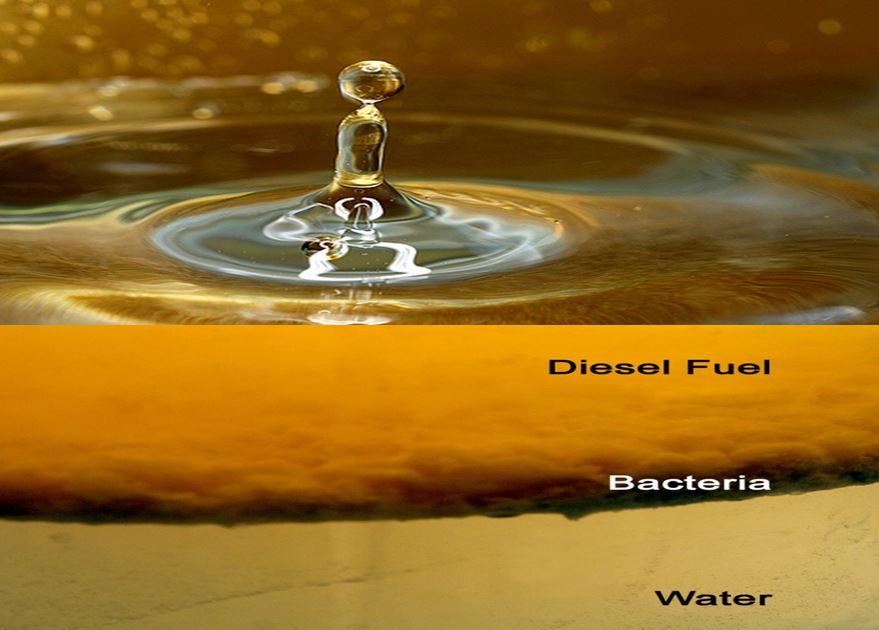
Prologue: An Unpleasant Experience
A couple of months ago, a notable haulage operator shared a sad experience on diesel fuel contamination with us. Mid 2012, six units of less than a year old 30tonnes truck-trailer were dispatched to haul products for a contract client. Trucks were loaded and fueled at client’s fuel dump. Abuja, Nigeria’s Federal Capital Territory (FCT) was the destination for all trucks. Upon return the third day, drivers came with series of complaints regarding the functioning of the trucks in transit. Maintenance Unit did a quick diagnostic and the problem was narrowed down to the injection system. Further examination revealed that the Injectors have all packed up. Cause of problem? Contaminated Diesel! Revamping and retuning injectors set the company back financially by N0.7million. The haulage company will require net-earnings from a minimum of fifteen (15) trips over the same distance or close (barring any unforeseen circumstances) to recover this unintended, undesirable and absolutely avoidable expense!
Understanding Diesel Contamination
Today’s diesel engines are much less tolerant of fuel contaminants than older engines. Any contamination by water or other substance has a chance of causing permanent damage to the engine or fuel system if it gets into the engine. The presence of water in fuel injection systems can greatly increase the amount of wear inflicted on the engine and may damage it.
Generically speaking, water and sediment contamination of diesel is a fact-of-life. Diesel fuel is a complex product; its primary use is as a fuel, however, its other functions are for lubricating and cooling the fuel injection equipment.
However, there is another dimension of fuel contamination not exactly alien to developed economies but very much pervasive in developing and third world economies like ours where there is a huge disparity in the price of kerosene and diesel (DPK & AGO). In other climes, they call it kerosene or paraffin contamination of diesel. But in Nigeria, the street name for this crude and highly obstructive practice is ‘Rice & Beans’! In another article coming in shortly, we will take some time to critically assess this phenomenon.
But for now, we will evaluate the contamination that happens either naturally or out of negligence in one form or the other. We will conclude by looking at the consequences of contamination and how we can guide or insulate our operations against this performance-eroding problem in whatever form it choose to manifest. However, that will only happen when we have shed more light on the ‘Rice and Beans’ dimension of diesel contamination.
Generic diesel fuel contamination: The ULSD Implication
As of 2006, almost all of the petroleum-based diesel fuel available in UK, Europe and North America is of a ULSD type. Ultra-low-sulfur diesel (ULSD) is diesel fuel with substantially lowered sulfur content; as low as 15 parts per million (15ppm). The move to lower sulfur content is expected to allow the application of newer emissions control technologies that should substantially lower emissions of particulate matter from diesel engines. New emissions standards, dependent on the cleaner fuel, have been in effect for automobiles in the United States since model year 2007.
ULSD has lower energy content due to the heavy processing required to remove large amounts of sulfur from oil, leading to 1-2% lower fuel economy. Using it requires more costly oil. It was the intention of this legislation to reduce sulphur related emissions, but the initiative has had other knock-on effects. Sulphur is required in diesel to provide lubrication for the engine and without it engine components experience greater wear. Removing almost all of this sulphur reduces the lubricity of the diesel, which is currently solved by adding bio-diesel to the fuel, as it has a superior lubricity to petro diesel. Whilst adding bio-diesel solves the lubricity issue, it breeds other problem that result in fuel contamination.
At first, it may appear to us that the ULSD dimension is not much of our problem since our diesel grade differs. But then, we tend to see the linkage when we consider the issue from another perspective.
The diesel fuel marketed in Nigeria is remarkably different from the ULSD grade. The cut-over to ULSD in first world countries was principally driven by the desire to combat emission while still leveraging on the fuel economy of diesel. A quick check at Nigeria’s DPR website reveals that the benchmark given to importers for diesel sulfur concentrations is as high as 5000ppm. It explains why diesel dispensed at our pumps is among the poorest of qualities in the world in terms of sulphur content. It similarly explains why heavy and prickly dark fumes trail the exhaust pipes of most trucks on our roads. This is not unusual and is rather typical of most third world countries where little effort or concern is devoted to combatting the spiraling challenge of greenhouse emissions.
Virtually every truck manufactured in Europe and North America from 2006 downward is ULSD compliant. Nigeria, like many other countries depend on these places to meet their fleet requirement. While only a few route their purchases through local representative of major international automobile manufacturers (who have taken the time to ensure that manufacturers provide specs specially conditioned to work with our local peculiarities), many simply import directly without much consideration for compliance. At the end of the day, you pump diesel with sulphur content of up to 5000ppm into a truck with sulphur tolerance level of barely 15ppm! There is therefore the possibility that the bouts of fuel contamination and the consequent damages to sensitive truck parts that many truckers suffer upon deployment of imported new or used assets has more to do with the mismatch of trucks against local realities as explained above.
Water in Diesel Contamination
Diesel has a good rapport with water but NOT with ‘Excess Water’. Fuel must be free of excess water. Excess or what is otherwise called free-water breaks down the protective film strength of the fuel and leads to nozzle scuffing and seizure failures. Removing excess water becomes even more important as the world gravitate towards increasingly lower fuel sulphur levels. The process to remove fuel sulphur also removes some of the long chain carbon molecules, which improve the film strength of the fuel. As fuel come with lower natural resistance to scuffing and seizure, so also will be need to ensure that water contamination is reduced to the barest minimum.
Water in fuel also causes Diesel-Bug. Petro-diesel can absorb up to a healthy 200ppm of water resulting in dissolved water content in the fuel. Beyond this healthy level, as the temperature of the fuel rises and falls during engine operation the excess dissolved water precipitates out of the fuel. As this water is heavier than the fuel it sinks to the bottom of the tank, forming a layer of free-water. This free-water can encourage the growth of diesel bug. Diesel Bug is the generic name given to the microbes that grow within fuel tanks. It is a cocktail of up to 100 different strains of bacteria, mould and yeast. Like all living organisms they need food and water to survive. Fuel is their food and the presence of free water in the tank will allow them to thrive and feed on the hydrocarbons in your diesel. Not only does this gradually degrade the quality of the fuel, but the microbes will also produce bio-mass which will block engine filters. They also excrete acids that will, over time, corrode your fuel tank.
Abrasive wear & Fuel Contamination
Fuel Injection pressures and cleanliness requirements are far different today than from just a few years ago. Mechanical Pump Systems commonly operated at pressures from 10,000 – 14,000 psi. For most of the trucks manufactured post 2006 and commonly found on our roads in recent time, the increasingly rigorous exhaust emission standards of the country of manufacture have driven injection pressures to exceed 40,000 psi. While these very high injection pressures improve fuel atomization and reduce emissions, they also cause dramatically accelerated fuel system abrasive wear. The presence of these abrasive particles in fuel can also be traced to the petroleum distillation process. Furthermore, additional abrasives also enter the fuel tank in the form of dusty air through unfiltered tank vents or unvented fuel caps. Presence of microscopic abrasive particles in fuel cause accelerated injector abrasive wear. They lead to premature abrasive wear-out of the injector cartridge valve, resulting in excessive high-pressure internal leakage.
Negligence & Fuel Contamination
Other causes of contamination include poor fuel storage, bad fuel transfer and housekeeping practices, or simple human error. All these either isolated or combined can result in grit, rust, water, sand and other contaminants ending up in the fuel, which ultimately could harm the sensitive engine fuel system.
All the above variants of fuel contamination constitute what we call generic or non-deliberate causes. But the reality is that some actually do go out of their way to deliberately contaminate or better put adulterate diesel quality. How and why such could happen are the issues we will be highlighting in our next article titled ‘Rice and Bean Phenomenon in Diesel Contamination’.





